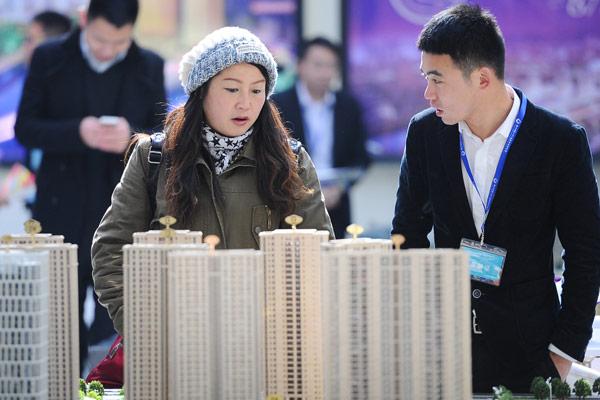The Central Economic Work Conference in December outlined the Chinese government's key economic objectives and policy directions for 2017. The overall message that "stability is the main theme", from "development is the number one task" a year ago, suggests more emphasis on reducing financial risks and less on ensuring growth is at least 6.5 percent. That is in recognition that China's credit growth-almost 17 percent in 2016-is unsustainable.
The 2016 conference put more emphasis on "financial risk control and prevention" and the "need to curb asset bubbles" than the previous year's and considered that "reducing corporate leverage while controlling overall leverage is the top priority". The government plans more "market-oriented" debt-equity swaps. But that cannot be the main way to lower corporate debt given that these swaps tend to be financially unattractive for Chinese banks, and the government has an incentive not to weaken the banks' balance sheets too much. Therefore, containing new credit extension will have to be the key pillar.
It is thus more likely that the government will set the GDP growth target for 2017 lower than the 6.5-7 percent for 2016 and/or will interpret the growth target less strictly. However, in light of the 19th National Congress of the Communist Party of China in autumn, a drastic change of course is unlikely this year. We (at Oxford Economics) project 6.3 percent GDP growth.
The conference concluded that fiscal policy should be "more proactive and effective" in 2017, from "more proactive" a year earlier. This confirms that, after having embarked on a more expansionary "official" fiscal policy (financed by government bond issuance) in 2016 in response to concerns about the limits of credit-based growth support, the policy will continue on that path this year. Nonetheless, much of the fiscal activity in China continues to be quasi-fiscal, financed by loans from the financial system.
The conference's call for "prudent and neutral monetary policy" sounds somewhat less dovish than that for "prudent" and "flexible" policy a year ago. The absence of a call to "reduce financing costs" should come as no surprise, following the recent rise in China's inter-bank interest rates and the prospect of higher interest rates as well as higher inflation in China in 2017. Based on the language of the conference statement and other recent comments by senior policymakers, the target for overall credit growth-total social financing excluding equity, adjusted for local government bond issuance-is likely to come down to 14-15 percent.
The policy prescription on the exchange rate-"to increase flexibility while maintaining general stability at a reasonable and balanced level"-has been unchanged for many years. But changing circumstances mean changing specifics. Since the end of 2014 the People's Bank of China, or the central bank, has allowed some depreciation versus the US dollar in the face of pressures from financial capital outflows and a globally strong greenback, while intervening to contain the pace of depreciation. This is largely to prevent more outflows triggered by a weaker yuan.
However, this intervention has caused foreign exchange reserves to fall to $3 trillion in the two years by the end of 2016. The market's realization that foreign exchange reserves cannot continue to fall indefinitely has led to worries and speculation about a faster pace of depreciation. In 2017, the central bank will continue to walk a fine line.
Meanwhile, to contain the depletion of foreign exchange reserves, policymakers are likely to continue to tighten up enforcement of foreign exchange regulations and take further steps to reduce financial outflows such as containing outbound investment and overseas lending.
Policymakers want to avoid high-profile measures such as reducing quota or imposing new restrictions, if possible. But, to bring outflows down to a level that is consistent with stable foreign exchange reserves, they may end up having to resort to such steps eventually.
The conference suggested local measures to contain housing prices in large cities will be maintained, slowing real estate construction in 2017, while medium-sized cities have been asked to reduce stocks of unsold housing. And a government-induced reduction of excess industrial capacity is to be extended to sectors other than coal mining and steel.
(The author is head of Asia Economics at Oxford Economics. The article is first published in China Daily)




 A single purchase
A single purchase









